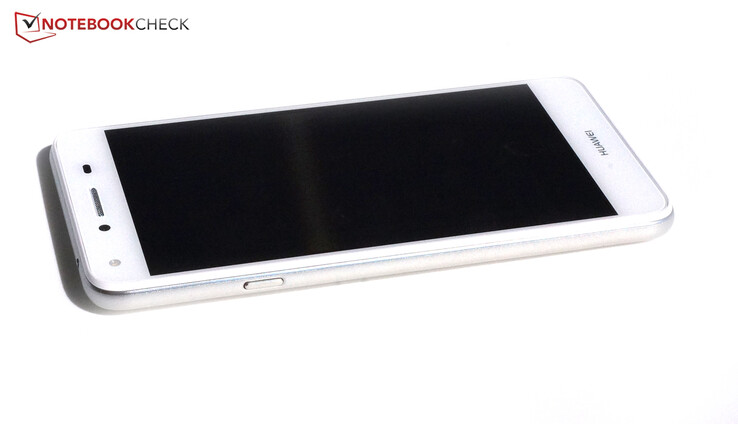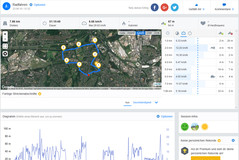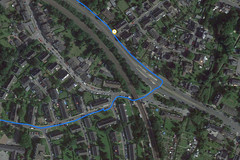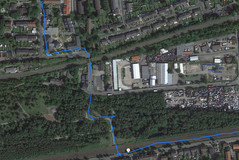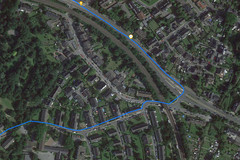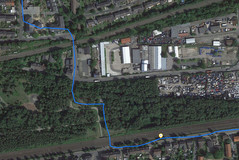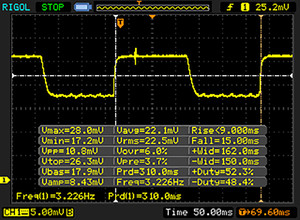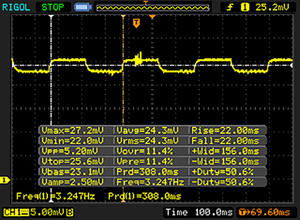华为 Y6 II Compact 智能手机简短评测
» Notebookcheck多媒体笔记本电脑Top 10排名
» Notebookcheck游戏笔记本电脑Top 10排名
» Notebookcheck低价办公/商务笔记本电脑Top 10排名
» Notebookcheck高端办公/商务笔记本电脑Top 10排名
» Notebookcheck工作站笔记本电脑Top 10排名
» Notebookcheck亚笔记本电脑Top 10排名
» Notebookcheck超级本产品Top 10排名
» Notebookcheck变形本产品Top 10排名
» Notebookcheck平板电脑Top 10排名
» Notebookcheck智能手机Top 10排名
» Notebookcheck评测过最出色的笔记本电脑屏幕
» Notebookcheck售价500欧元以下笔记本电脑Top 10排名
» Notebookcheck售价300欧元以下笔记本电脑Top 10排名
| Networking | |
| iperf Server (receive) TCP 1 m | |
| LG G5 | |
| Samsung Galaxy S7 Edge | |
| Honor 5C | |
| Huawei Y6 II Compact | |
| iperf Client (transmit) TCP 1 m | |
| Samsung Galaxy S7 Edge | |
| LG G5 | |
| Honor 5C | |
| Huawei Y6 II Compact | |
| |||||||||||||||||||||||||
Brightness Distribution: 92 %
Center on Battery: 491 cd/m²
Contrast: 546:1 (Black: 0.9 cd/m²)
ΔE ColorChecker Calman: 6.6 | ∀{0.5-29.43 Ø4.78}
ΔE Greyscale Calman: 4.9 | ∀{0.09-98 Ø5}
Gamma: 2.12
CCT: 7090 K
| Huawei Y6 II Compact IPS, 1280x720, 5" | LG K10 IPS, 1280x720, 5.3" | HTC Desire 530 IPS, 1280x720, 5" | Honor 5C IPS, 1920x1080, 5.2" | Samsung Galaxy J3 2016 Super AMOLED, 1280x720, 5" | |
|---|---|---|---|---|---|
| Screen | 7% | 22% | 14% | -5% | |
| Brightness middle (cd/m²) | 491 | 370 -25% | 375 -24% | 515 5% | 295 -40% |
| Brightness (cd/m²) | 487 | 355 -27% | 376 -23% | 498 2% | 299 -39% |
| Brightness Distribution (%) | 92 | 92 0% | 91 -1% | 93 1% | 96 4% |
| Black Level * (cd/m²) | 0.9 | 0.28 69% | 0.32 64% | 0.49 46% | |
| Contrast (:1) | 546 | 1321 142% | 1172 115% | 1051 92% | |
| Colorchecker dE 2000 * | 6.6 | 6.7 -2% | 6 9% | 6.2 6% | 5.8 12% |
| Colorchecker dE 2000 max. * | 12.9 | 17.8 -38% | 9.5 26% | 11.4 12% | 8.6 33% |
| Greyscale dE 2000 * | 4.9 | 7.9 -61% | 4.5 8% | 7.4 -51% | 4.8 2% |
| Gamma | 2.12 104% | 2.21 100% | 2.26 97% | 2.28 96% | 1.84 120% |
| CCT | 7090 92% | 9072 72% | 6975 93% | 8664 75% | 6252 104% |
* ... smaller is better
Display Response Times
| ↔ Response Time Black to White | ||
|---|---|---|
| 24 ms ... rise ↗ and fall ↘ combined | ↗ 9 ms rise | |
| ↘ 15 ms fall | ||
| The screen shows good response rates in our tests, but may be too slow for competitive gamers. In comparison, all tested devices range from 0.1 (minimum) to 240 (maximum) ms. » 53 % of all devices are better. This means that the measured response time is worse than the average of all tested devices (20.2 ms). | ||
| ↔ Response Time 50% Grey to 80% Grey | ||
| 44 ms ... rise ↗ and fall ↘ combined | ↗ 22 ms rise | |
| ↘ 22 ms fall | ||
| The screen shows slow response rates in our tests and will be unsatisfactory for gamers. In comparison, all tested devices range from 0.165 (minimum) to 636 (maximum) ms. » 72 % of all devices are better. This means that the measured response time is worse than the average of all tested devices (31.6 ms). | ||
Screen Flickering / PWM (Pulse-Width Modulation)
| Screen flickering / PWM not detected | |||
In comparison: 53 % of all tested devices do not use PWM to dim the display. If PWM was detected, an average of 8111 (minimum: 5 - maximum: 343500) Hz was measured. | |||
| AnTuTu v6 - Total Score (sort by value) | |
| Huawei Y6 II Compact | |
| LG K10 | |
| HTC Desire 530 | |
| Honor 5C | |
| Samsung Galaxy J3 2016 | |
| GFXBench (DX / GLBenchmark) 2.7 | |
| T-Rex Onscreen (sort by value) | |
| Huawei Y6 II Compact | |
| LG K10 | |
| HTC Desire 530 | |
| Honor 5C | |
| Samsung Galaxy J3 2016 | |
| 1920x1080 T-Rex Offscreen (sort by value) | |
| Huawei Y6 II Compact | |
| LG K10 | |
| HTC Desire 530 | |
| Honor 5C | |
| Samsung Galaxy J3 2016 | |
| GFXBench 3.0 | |
| on screen Manhattan Onscreen OGL (sort by value) | |
| Huawei Y6 II Compact | |
| LG K10 | |
| HTC Desire 530 | |
| Honor 5C | |
| 1920x1080 1080p Manhattan Offscreen (sort by value) | |
| Huawei Y6 II Compact | |
| LG K10 | |
| HTC Desire 530 | |
| Honor 5C | |
| GFXBench 3.1 | |
| on screen Manhattan ES 3.1 Onscreen (sort by value) | |
| Huawei Y6 II Compact | |
| LG K10 | |
| Honor 5C | |
| 1920x1080 Manhattan ES 3.1 Offscreen (sort by value) | |
| Huawei Y6 II Compact | |
| LG K10 | |
| Honor 5C | |
| PCMark for Android - Work performance score (sort by value) | |
| Huawei Y6 II Compact | |
| LG K10 | |
| HTC Desire 530 | |
| Honor 5C | |
| Samsung Galaxy J3 2016 | |
| Geekbench 4.0 | |
| 64 Bit Single-Core Score (sort by value) | |
| Huawei Y6 II Compact | |
| 64 Bit Multi-Core Score (sort by value) | |
| Huawei Y6 II Compact | |
| Compute RenderScript Score (sort by value) | |
| Huawei Y6 II Compact | |
| Mozilla Kraken 1.1 - Total (sort by value) | |
| Huawei Y6 II Compact | |
| LG K10 | |
| HTC Desire 530 | |
| Honor 5C | |
| Samsung Galaxy J3 2016 | |
| Octane V2 - Total Score (sort by value) | |
| Huawei Y6 II Compact | |
| LG K10 | |
| HTC Desire 530 | |
| Honor 5C | |
| Samsung Galaxy J3 2016 | |
| WebXPRT 2015 - Overall (sort by value) | |
| Huawei Y6 II Compact | |
| LG K10 | |
| HTC Desire 530 | |
| Honor 5C | |
| Samsung Galaxy J3 2016 | |
| JetStream 1.1 - Total Score (sort by value) | |
| Huawei Y6 II Compact | |
| LG K10 | |
| HTC Desire 530 | |
| Honor 5C | |
| Samsung Galaxy J3 2016 | |
* ... smaller is better
| AndroBench 3-5 | |
| Sequential Read 256KB (sort by value) | |
| Huawei Y6 II Compact | |
| LG K10 | |
| HTC Desire 530 | |
| Honor 5C | |
| Samsung Galaxy J3 2016 | |
| Sequential Write 256KB (sort by value) | |
| Huawei Y6 II Compact | |
| LG K10 | |
| HTC Desire 530 | |
| Honor 5C | |
| Samsung Galaxy J3 2016 | |
| Random Read 4KB (sort by value) | |
| Huawei Y6 II Compact | |
| LG K10 | |
| HTC Desire 530 | |
| Honor 5C | |
| Samsung Galaxy J3 2016 | |
| Random Write 4KB (sort by value) | |
| Huawei Y6 II Compact | |
| LG K10 | |
| HTC Desire 530 | |
| Honor 5C | |
| Samsung Galaxy J3 2016 | |
| Sequential Read 256KB SDCard (sort by value) | |
| Huawei Y6 II Compact | |
| LG K10 | |
| HTC Desire 530 | |
| Honor 5C | |
| Samsung Galaxy J3 2016 | |
| Sequential Write 256KB SDCard (sort by value) | |
| Huawei Y6 II Compact | |
| LG K10 | |
| HTC Desire 530 | |
| Honor 5C | |
| Samsung Galaxy J3 2016 | |
| Asphalt 8: Airborne | |||
| Settings | Value | ||
| high | 24 fps | ||
| very low | 30 fps | ||
| Dead Trigger 2 | |||
| Settings | Value | ||
| high | 29 fps | ||
(±) The maximum temperature on the upper side is 45 °C / 113 F, compared to the average of 35.2 °C / 95 F, ranging from 21.9 to 247 °C for the class Smartphone.
(±) The bottom heats up to a maximum of 42.2 °C / 108 F, compared to the average of 34 °C / 93 F
(±) In idle usage, the average temperature for the upper side is 35 °C / 95 F, compared to the device average of 32.9 °C / 91 F.
Huawei Y6 II Compact audio analysis
(+) | speakers can play relatively loud (86.4 dB)
Bass 100 - 315 Hz
(-) | nearly no bass - on average 31% lower than median
(±) | linearity of bass is average (7.3% delta to prev. frequency)
Mids 400 - 2000 Hz
(±) | reduced mids - on average 7.7% lower than median
(±) | linearity of mids is average (11.7% delta to prev. frequency)
Highs 2 - 16 kHz
(±) | higher highs - on average 13.4% higher than median
(+) | highs are linear (5.9% delta to prev. frequency)
Overall 100 - 16.000 Hz
(-) | overall sound is not linear (35.6% difference to median)
Compared to same class
» 85% of all tested devices in this class were better, 1% similar, 14% worse
» The best had a delta of 11%, average was 35%, worst was 134%
Compared to all devices tested
» 93% of all tested devices were better, 1% similar, 6% worse
» The best had a delta of 4%, average was 24%, worst was 134%
Samsung Galaxy S7 audio analysis
(+) | speakers can play relatively loud (87.4 dB)
Bass 100 - 315 Hz
(-) | nearly no bass - on average 25.2% lower than median
(±) | linearity of bass is average (9.2% delta to prev. frequency)
Mids 400 - 2000 Hz
(+) | balanced mids - only 4.1% away from median
(+) | mids are linear (5% delta to prev. frequency)
Highs 2 - 16 kHz
(±) | higher highs - on average 6.6% higher than median
(+) | highs are linear (6.3% delta to prev. frequency)
Overall 100 - 16.000 Hz
(±) | linearity of overall sound is average (20.9% difference to median)
Compared to same class
» 38% of all tested devices in this class were better, 8% similar, 54% worse
» The best had a delta of 11%, average was 35%, worst was 134%
Compared to all devices tested
» 56% of all tested devices were better, 8% similar, 36% worse
» The best had a delta of 4%, average was 24%, worst was 134%
| Off / Standby | |
| Idle | |
| Load |
|
Key:
min: | |
| Huawei Y6 II Compact 2200 mAh | Samsung Galaxy J3 2016 2600 mAh | Honor 5C 3000 mAh | HTC Desire 530 2200 mAh | |
|---|---|---|---|---|
| Power Consumption | 8% | -28% | -79% | |
| Idle Minimum * (Watt) | 0.57 | 0.96 -68% | 0.89 -56% | 1.58 -177% |
| Idle Average * (Watt) | 1.53 | 1.14 25% | 2.07 -35% | 2.59 -69% |
| Idle Maximum * (Watt) | 1.6 | 1.23 23% | 2.15 -34% | 2.66 -66% |
| Load Average * (Watt) | 2.82 | 2.45 13% | 3.46 -23% | 5.22 -85% |
| Load Maximum * (Watt) | 5.69 | 2.92 49% | 5.18 9% | 5.67 -0% |
* ... smaller is better
| Huawei Y6 II Compact 2200 mAh | LG K10 2300 mAh | HTC Desire 530 2200 mAh | Honor 5C 3000 mAh | Samsung Galaxy J3 2016 2600 mAh | |
|---|---|---|---|---|---|
| Battery runtime | -10% | -14% | -16% | 16% | |
| Reader / Idle (h) | 19.6 | 18.7 -5% | 18.6 -5% | 16.6 -15% | 20.2 3% |
| H.264 (h) | 11.4 | 10.1 -11% | 7.6 -33% | 10 -12% | 9.8 -14% |
| WiFi v1.3 (h) | 10.4 | 7.6 -27% | 7.1 -32% | 9.7 -7% | 8.4 -19% |
| Load (h) | 3.7 | 3.9 5% | 4.2 14% | 2.6 -30% | 7.2 95% |
Pros
Cons
华为的Y6 II Compact有三个非常清晰的核心竞争力:性能,电池续航和售价。我们的测试机在这三个方面表现都十分优秀,不过其他方面像是较弱的相机和低对比度屏幕都不能算是吸引人。
尽管它的机身采用了塑料材质,但有纹理的机背和高品质工艺给了它十足的质感。同时,一些额外功能如双SIM卡、microSD卡槽、USB OTG、收音机和LTE都一应俱全。而较差的扬声器、过时的操作系统和高发热量则背道而驰。
华为这台机型的设计重点很明显——高性价比和优秀电池续航。不过,这台智能手机的其他方面都有所欠缺,其中有几项让人不免难以接受。
喜欢它简洁设计,或者只是需要一台性能优秀、性价比高的智能手机的用户都可以考虑华为的Y6 II Compact。不过,请不要对它的相机期待太高,同样也请也不要期待得到色彩绚丽的屏幕或者优秀的扬声器。
注:本文是基于完整评测的缩减版本,阅读完整的英文评测,请点击这里。
Huawei Y6 II Compact
- 09/13/2016 v5.1 (old)
Florian Wimmer




